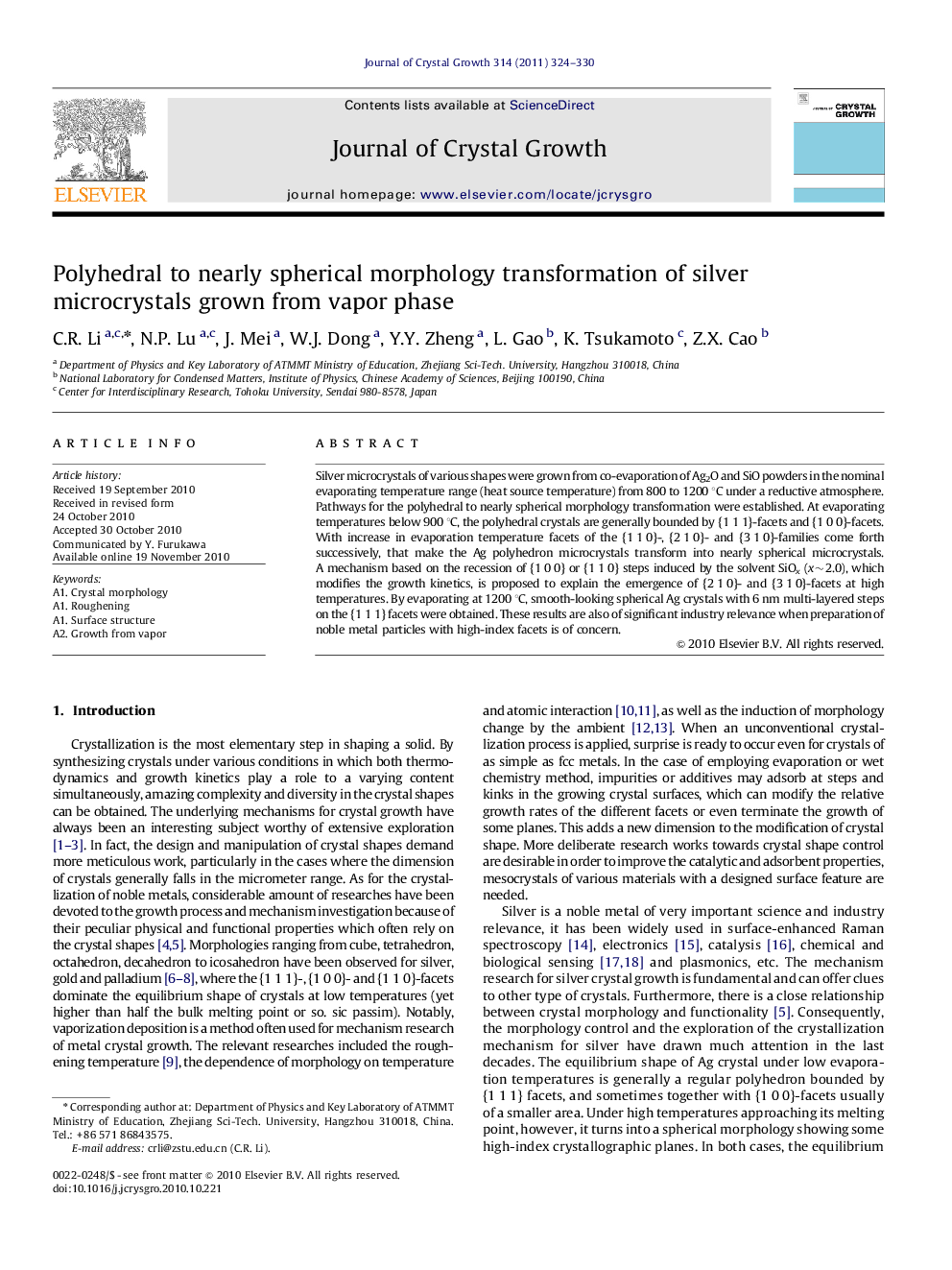| Article ID | Journal | Published Year | Pages | File Type |
|---|---|---|---|---|
| 1793050 | Journal of Crystal Growth | 2011 | 7 Pages |
Silver microcrystals of various shapes were grown from co-evaporation of Ag2O and SiO powders in the nominal evaporating temperature range (heat source temperature) from 800 to 1200 °C under a reductive atmosphere. Pathways for the polyhedral to nearly spherical morphology transformation were established. At evaporating temperatures below 900 °C, the polyhedral crystals are generally bounded by {1 1 1}-facets and {1 0 0}-facets. With increase in evaporation temperature facets of the {1 1 0}-, {2 1 0}- and {3 1 0}-families come forth successively, that make the Ag polyhedron microcrystals transform into nearly spherical microcrystals. A mechanism based on the recession of {1 0 0} or {1 1 0} steps induced by the solvent SiOx (x∼2.0), which modifies the growth kinetics, is proposed to explain the emergence of {2 1 0}- and {3 1 0}-facets at high temperatures. By evaporating at 1200 °C, smooth-looking spherical Ag crystals with 6 nm multi-layered steps on the {1 1 1} facets were obtained. These results are also of significant industry relevance when preparation of noble metal particles with high-index facets is of concern.
